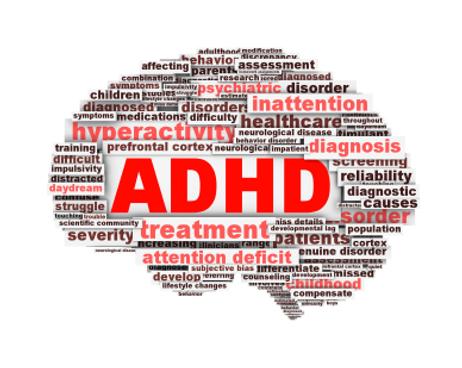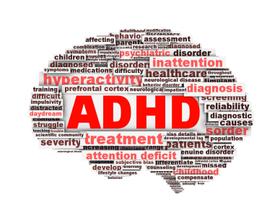Affecting 8% to 10% of all school-aged children in the United States, ADHD is a common behavioral disorder that often results in a child's struggle to focus his or her attention both in and outside of school.
While all kids act disruptively at times, ADHD symptoms will persist over an extended period of time, while occurring in a variety of settings. As the Nemours Foundations indicates, ADHD impairs “a child's ability to function socially, academically, and at home." With this rising trend, schools are implementing plans to support students and families to achieve both social and academic success.
This video features psychologists from the Center for Management of ADHD at The Children's Hospital of Philadelphia discussing the influence of ADHD on school performance.
Public Schools: Plans for Success with ADHD Students
- Federal Requirements and Individual Education Plans
As required by federal law, all public schools must make certain accommodations for any child struggling with a learning or developmental disability—including children diagnosed with ADHD. In some cases, a child may benefit from an Individualized Education Plan (IEP), which would require the child, parents, and teachers to work together in planned meetings to set appropriate goals, discuss strategies for success, and implement appropriate accommodations.
While these options are available, there are still steps that must be taken prior to the implementation of any IEP or education plan. According to Doctor David Rabiner, in his article "Obtaining Educational Services for Children with ADHD," he explains: "public schools have certain procedures that must be followed prior to providing special services for any child."
While a parent can request that their child be evaluated for special services or IEP at any time, teachers may also initiate such requests as well. After a request is submitted, the child will generally be evaluated with vision and hearing screenings, most likely be observed in class, and his or her tests may also be evaluated.
In this video, Dana Tiller, LPC, an outpatient therapist at Clarity Child Guidance Center, discusses how to help kids diagnosed with ADHD succeed in the classroom.
After this process, the teacher will most likely complete a standardized behavior form, and parents will also submit a similar form as well. In addition to these steps, a referral for a medical evaluation is also normally required, which will ultimately help determine the appropriate accommodations for a child.
- Tactics to Manage Behavior and Improve Learning
In their research, Tulla Karras and Holly Hanke explain how teachers can provide support for children with ADHD in mainstream classrooms. Since children with ADHD often exhibit hyperactive behavior, they often feel the urge to release energy in a variety of ways. To deal with this, Karras and Hanke provide a list of tactics for student-teacher intervention.
Tactics include seating a child away from external distracters, such as doors, windows, or other areas with high traffic. This also may include seating a child with ADHD near the teacher's desk, near the front of the class, or, on the other hand, in the back of the room. The goal with the seating arrangements is to minimize potential distractions, so the specific location may vary based on each child's personality and behavior.
Continuing, Karras and Hanke support that for children struggling with ADHD, assigning kids only one task at a time often helps them focus better. Also, teachers can provide greater support if they give children both written and oral instructions on tasks and assignments, and they should be sure that class rules are clearly posted as well. Paired with this, teachers may also need to provide children with extra time on work or tests and allow students to make copies of materials from class home for further practice.
In this video, Dr. Jonas Bromberg speaks with 5th-grade teacher Jon Weinberger of the Lawrence school in Brookline, MA, about his strategies for improving the classroom experience for children with ADHD.
- Parent-Teacher Communication
Karras and Hanke emphasize the importance of establishing open and honest communication with their child's teacher—especially in cases of students with special needs: "It's also crucial that you and your child's teacher communicate about what's working and what isn't. You can help each other greatly by simply e-mailing each other daily or keeping a log of your child's behavior that he can carry back and forth between home and school."
Another benefit to strong communication between a parent and teachers occurs as parents are involved in implementing effective techniques at home. For parents, strategies at home can improve a child's success, both behaviorally and academically.
For example, setting up specific times using an organized schedule, such as specific playtime, dinner time, homework time, and so forth, will help your child deal with routine and may help alleviate his or her lack of focus.
Also, having clear house rules and clarifying directions by looking into a child's eyes and asking him or her to repeat information back will help a child focus on appropriate behavior.
Meanwhile, as the Child Development Institute explains, you should reinforce behaviors with positivity. Explain to your children what behaviors you would like to see, rather than simply the behaviors you prohibit. Considering that children with ADHD are consistently told about what they are doing wrong, praise regarding good behavior can make a large difference in their behavior.
To most successfully transition a child with ADHD towards more responsibility, greater academic success, and overall improved behavior, communication with a child's teacher and school resources is essential. Working together at home and at school will help a student with ADHD flourish to his or her fullest potential.
Questions? Contact us














